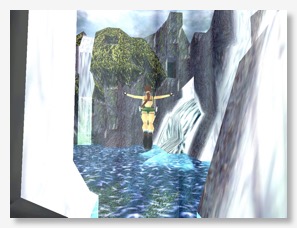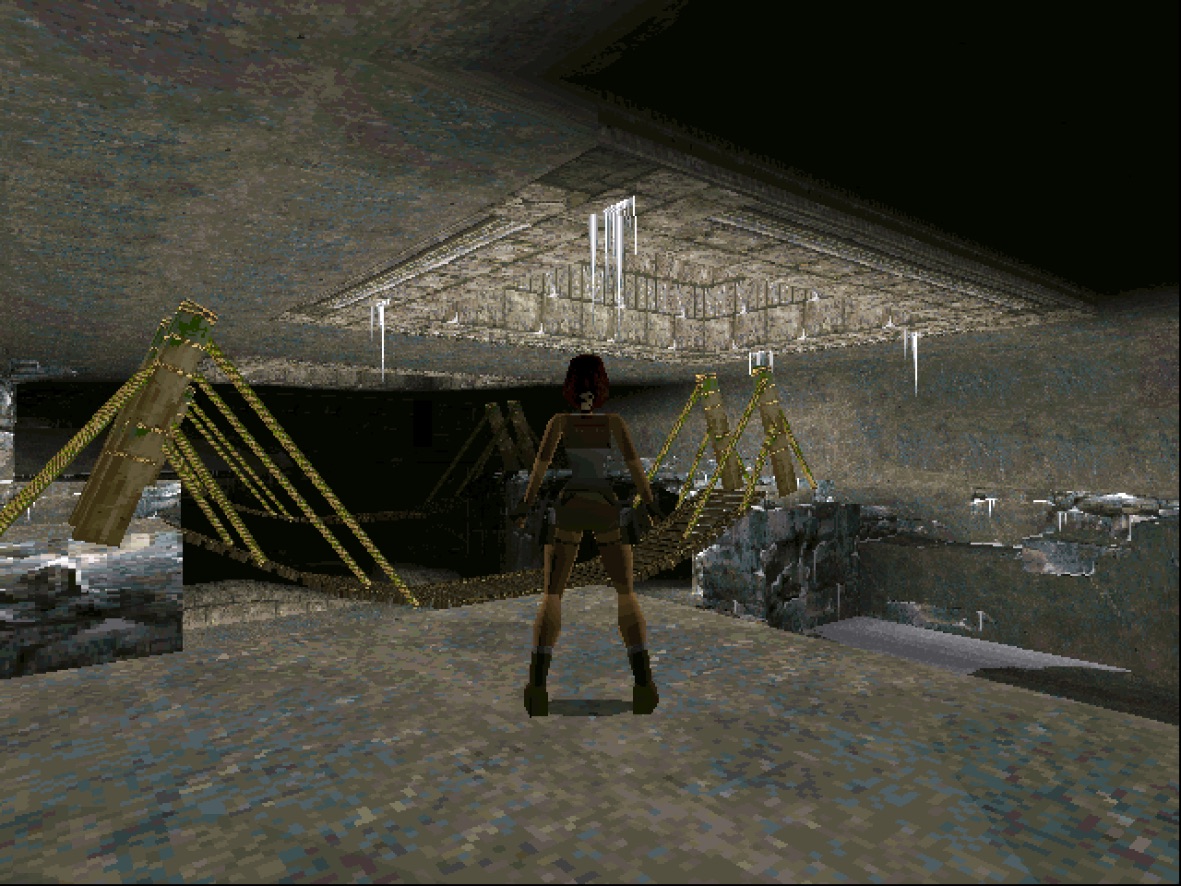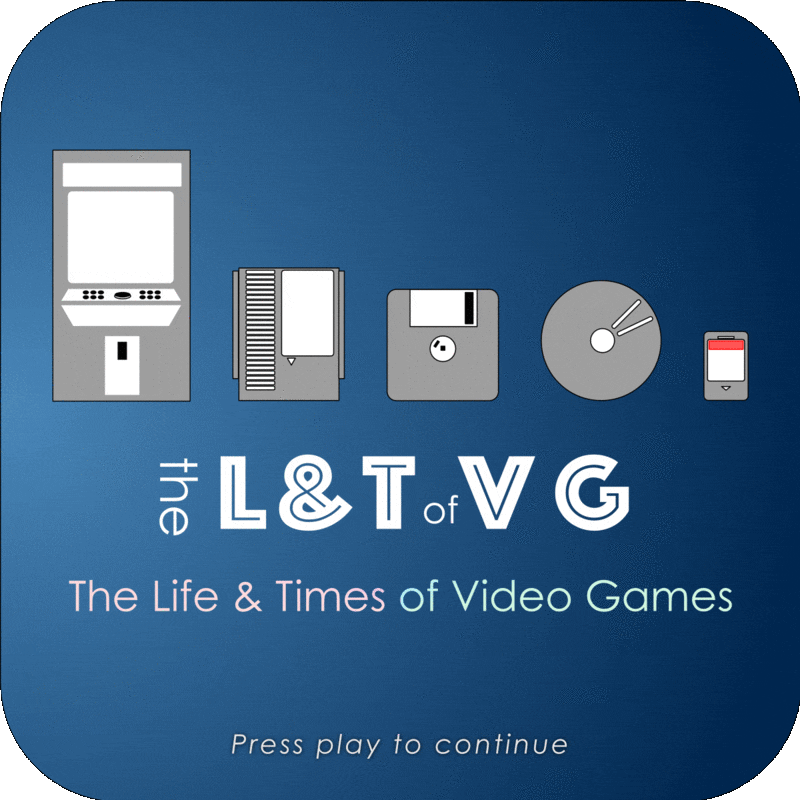7 - The Tomb Raider grid (part 1)

Every aspect of the original Core Design Tomb Raider series (and by extension the franchise's success post-Core) comes back to the grid that lies beneath it — the majority of the puzzles; the platforming; the cavernous chambers and ruins and outdoor areas that provide a sense of isolation, of solitude and discovery; and Lara Croft's iconic acrobatic movement style.
And yet it never would have happened if not for one pragmatic choice made by a programmer early in the game's development.
This is the story of how that came to be, and how it made Tomb Raider…well, Tomb Raider, based on interviews with Heather Stevens (née Gibson) and Gavin Rummery as well as my past work covering Tomb Raider's history as a freelancer.
Nathan McCree has an album coming out soon called the Tomb Raider Suite that contains fully orchestrated renditions from the Royal Philharmonic Orchestra of reworked material from the first three Tomb Raider games, recorded at Abbey Road Studios. You can learn more about it here.
The original Tomb Raider game is available digitally on PC, Mac, PlayStation 3 and Vita, and mobile through several different storefronts. If you buy the HD-ified iOS version via lifeandtimes.games/tr1-ios then I'll get a small cut of the sale price. (It's actually the best version, provided you have an external gamepad you can use.)
Music credits:
- Selected portions of the original soundtrack from Tomb Raider 1, composed by Nathan McCree
- And everything else is my own work.
(Partial) Transcript
Superstars don't get much bigger than Lara Croft. Since her introduction to the world back in 1996, she's graced dozens of magazine covers around the world, been reported on in primetime news, had multiple books written about her life, been the protagonist in two and soon three Hollywood movies, appeared in advertisements for soft drinks and other products, starred in hundreds of comics and, depending on how you count them, at least 21 published games.
To many people she's a hero and a feminist icon — a source of strength and confidence for the cool grace with which she exhibits those very characteristics. To others she's a sex symbol, an object of the male gaze, and a soulless husk of a person.
But the truth is that she's just a video game character, created by animator Toby Gard while he led a small development team working on a 3D action-adventure game at British studio Core Design in the mid-1990s. Or at least that's what she was, originally. She was created to be an adventurer, an explorer, a treasure hunter — a kind of female Indiana Jones, with iconic twin pistols and a French braid hairstyle rather than a whip and hat. And in a feat arguably matched by none other, she has overshadowed the bestselling, blockbuster game franchise that made her such a star in the first place.
The story of Lara Croft has been told over and again during the past 21 years. It's a good one, and an important one, for many reasons, but this is as much of it as I'm going to tell here, now. Instead, I want to share the story of the unsung hero of Core Design's original Tomb Raider series — the thing that made it such an important, influential, and massively successful entertainment franchise that sold more than 20 million copies across its first three game entries.
It's easy to forget it now, as we look back on its jagged environments and unwieldy controls, but the original Tomb Raider game, released in October and November 1996 for PlayStation 1, Sega Saturn, and MS-DOS, was one of the best-looking and highest-rated games of its era.

Its design lacked the whimsical near-perfection of Super Mario 64, which was released about six months prior, but it made up for this with atmosphere and mood that was second to none and an alluring world that demanded a kind of patient precision. Tomb Raider, much like Jordan Mechner's brilliant 2D platformer Prince of Persia had done several years earlier, tied its mechanics, its rules by which players could navigate the world, to its detailed animation.
Lara Croft moved predictably and consistently. Controlling her felt at times like moving a remarkably agile tank, but that was a small price to pay for the intricate environmental puzzles that this enabled — with multi-jump manoeuvres and desperate leaps across chasms, dives between poisoned darts or spike traps, backflips up to secret areas, and much much more.
If you talk to the fans of the original games, or to one of the developers who worked on them, they'll tell you that the secret to Tomb Raider's brilliance was not its buxom star or its sultry marketing — although these certainly had a big contribution to its ultimate success — but rather the secret was its level design and the atmosphere that its level design, music, and art created.
And all of these things might have been totally different if not for one simple decision during development — one pragmatic choice to lay the levels out on a grid of square blocks. Everything comes back to that. The majority of the puzzles, and certainly all of the platforming, owe their existence to that decision. The same goes for the slight fog that diminishes distant objects to a white haze, and the cavernous chambers and ruins and outdoor areas that provide a sense of isolation, of solitude and discovery.
As do Lara's almost-iconic movements. Her backflips and sideways somersaults, her swan dives and her 180-degree forward rolls. These were all defined by the grid. The grid meant that players would always know that if they jumped forward, backward, or sideways from a standing start, they would finish exactly one block away. Likewise, three steps forward or backward were equal to the length of one block. As was hopping backwards. A running jump took three steps to prepare and travelled a distance of two blocks forward.
And when you coupled all these abilities with a grapple button that allowed Lara tried to catch a ledge while airborne, plus a few environmental elements like movable blocks she could push or pull and steep inclines that she would slide down — when you coupled all of these together, you had all the tools needed to devise some masterful environment puzzles.
Tomb Raider's grid was game-changing. It defined and confined the problem space for both players and developers in such a way that it became liberating. And as I alluded to before, it was only there because of one seemingly insignificant decision made in the interests of pragmatism and not art or idealism.
This is the story of how that came to be, and how it made Tomb Raider…well, Tomb Raider.
Let's begin in early 1995, when the Tomb Raider project was still in its earliest stages and had only just begun to emerge from its ideation phase to actual development.
This is Heather Stevens, one of the original Tomb Raider's two artists and level designers. She'd been at Core less than a year at that point, having previously spent five or six years as an artist with fellow East Midlands studio Rare.Heather Stevens: I was at the end of one project — Skeleton Krew. And working with a small team on there. And at the end of everybody's game we were kind of left in limbo a little bit with not much to do. And Toby Gard had just finished his game. He had been working on B.C. Racers and hadn't got a project lined up. So you're in this almost — this experimental stage in Core of a few of us talking to other people [and] seeing what ideas they've got and see if a team sometimes naturally forms.
Heather became team member three, after programmer Paul Douglas and of course animator and designer Toby Gard, the visionary pushing the Tomb Raider project.And that's what happened really; he hadn't got anything to start, [and] I hadn't, and we kind of ended up in the same room knocking ideas together. To be honest I don't know if Jeremy really knew what to do with me and Toby. We were both kind of probably one of the shortest terms there, as far as how long we'd been at Core. And Toby, as I say, he'd just finished his game. And I just had somebody pop into the room and say, 'Do you want to pop into Toby's room and work for a couple of weeks? See what he's doing.'
Heather set to work trying to build Toby's concept into a level, but 3D Studio was poorly equipped for the task on the computers of the era.Well I'd seen some of his early stuff when he first came to Core. He applied with a really good demo disc [disk?] as part of his CV. But that was really more of a top down Indiana Jones style Prince of Persia platformer. And I thought that was incredible, anyway, because it really was a work at home project. Obviously he'd done it in his own bedroom or something just before he came to Core. And he put that on hold to do BC Racers
Toby had just mocked up an Egyptian tomb in 3D computer graphics program 3D Studio, which is a precursor to the popular industry tool 3DS Max. It was to serve as a starting point as they began to turn his vision into reality.
And it didn't take him long to do it — a week or so. And I just thought, crikey, if you can put something like this into a game it'd be phenomenal. But that really was just the beginning of it.
This is Gavin Rummery, a programmer who joined Core, straight out of university, soon after development kicked off on Tomb Raider, and chose to work with Toby's team rather than another project called Swagman after being sold on his enthusiasm and the fact that it was 3D. Gavin was asked to do the code for the environments and bad guy behaviours and any other bits and bobs that the main character would encounter, while Paul would code the animation systems.Gavin Rummery: we're talking about pre-the arrival of graphics accelerators on the PC. So it was literally your computer's CPU attempting to draw what it could on the screen. Which meant that all the preview stuff was entirely wireframe, okay, so when the artists were trying to model stuff they were literally just looking at a wireframe of their character or whatever.
Gavin quickly determined that 3D Studio wasn't cutting it as a level design tool.
Worse, Gavin couldn't see how Heather would even build the levels — let alone how they'd go about making them interactive.If they wanted to see what it might look like when it was rendered out, they had to hit the render button and sit there, and it was like watching a 56k modem download something. Gradually it would appear on their monitor, very slowly, line by line, as the steam-powered computer back then would render out each line of the image.
Of course it was designed for doing stills and things like that. And FMVs. It wasn't actually designed for doing in-game stuff. But what it meant was that Heather was attempting to build the levels using that piece of software. So she was sat there with this just — she was kind of building an Egyptian environment, but it was just—you looked at the screen and it was like, I don't know, something out of Tron. Just all these lines all over the place. And she was trying to show me what it was doing and she was sort of trying to zoom in on an area to get in the room and she was like, 'Ahh, well, I think we're inside the room. I'm actually not sure anymore. I'm having real trouble with this because I can never work out — until I hit the render button — whether I'm building things that are overlapping with other things.'
So it was just like a complete nightmare. It was going to take her forever. She'd been working on this thing for quite a while as it was. It didn't really look like a level, as such. It was more of a kind of — it would have worked maybe as an asset in an FMV or something. And I honestly, especially given the computing power we had back then, was just looking at it going, 'Well, I have no idea how we're going to get this working.' And Paul was the same. The pair of us couldn't really see how on earth we were going to get a character to interact with something built out of completely arbitrary geometry.
(For more you'll have to either just listen to the episode or sign up as a supporter on Patreon — everyone who pledges $3 or more a month gets access to full episode transcripts [amongst other things].)So that part I was still at the very sceptical stage. I hadn't been at the company long, and I'd had Toby kind of hit me with this impossibly-ambitious-sounding game, and then I was looking at stuff like this and being told, oh, you've got to try and sort this out mate. It's like, christ almighty [??]. laughs This isn't going to happen, you know.
But I can't remember how long after that — it wasn't long after that. I did have a bit of a fiddle around trying to get — I think Heather built me something really simple like a tiny bit of a room or a staircase or something else trying to do the maths around colliding with that. And I was just thinking, well, this is gonna be a nightmare. Then I had this idea.
I can't remember when exactly it happened. It was only a few weeks after I'd been there. I played Ultima Underworld, which I don't know if you remember at all, or have ever played it, but it kind of pre-dated Doom and was one of the first 3D games I had seen on the PC that actually had texture maps on the walls.
So that means it had walls that might look like cut rock or stone, or that were buttressed by timber pieces, or they had been drawn to look like light is bouncing off them in a certain way. Basically, it really just means that the world was not composed of a handful of flat, solid, unchanging colours receding into the distance — which is how 3D games looked before that.
So at the time it was very groundbreaking, although if you see it now — if you look at a screenshot of it — it's got a tiny little 3D window in the middle of the screen surrounded by a UI. But it was basically built on a grid. You didn't feel like it was a grid because the draw distance was about two metres in front of your face, for a start. And you know, you were wandering around in a cave. It seemed kind of cool at the time. And it had taken me a while to realise, oh hang on a minute, this is all built on a grid. It doesn't feel like that.
The Life & Times of Video Games on the Web and social media
- Website: lifeandtimes.games
- Twitter: @LifeandTimesVG
- Instagram: @lifeandtimesvg
- YouTube: lifeandtimes.games/youtube
You can make a donation to help cover running costs and allow me to rely less on freelance income via
- Patreon: lifeandtimes.games/patreon
- or PayPal: paypal.me/mossrc
Please remember to subscribe and to leave a review on iTunes. A small donation of a few bucks a month on Patreon would go a long way, too, and it'd get you a bit of cool bonus content here and there on a private podcast feed.


